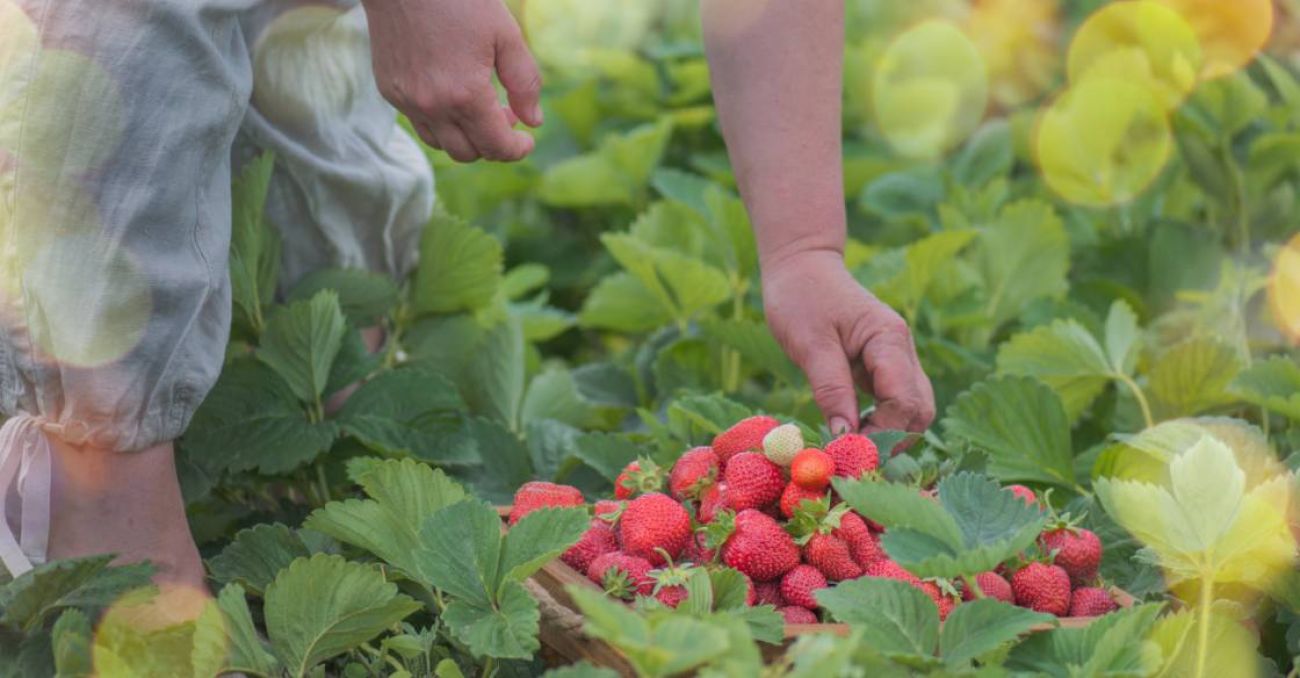Coronavirus outbreaks tied to migrant farm workers in Michigan

Coronavirus outbreaks among migrant workers are contributing to an uptick in cases in Michigan, which experts blame on short growing seasons, crowded housing, tenuous income and mistrust of government.
In the past few weeks, health officials have identified outbreaks in Lapeer, Oceana and Branch counties among workers tending to farms. The outbreaks come as Michigan’s caseload is tracking upward, with more than 300 new cases in each of the past two days this week.
In Oceana County, along Michigan’s west coast, more than 183 cases since May 1 have been traced to two agriculture outbreaks, with 102 of those cases in two farms alone, said Lynn Sutfin, a Michigan health spokesperson.
- The latest: Michigan coronavirus unemployment, map, curve, updated COVID-19 news
- Dashboard: Michigan coronavirus testing numbers, trends, COVID-19 data
Gov. Gretchen Whitmer has attempted to address the problem with an executive order requiring migrant housing operators to separate worker beds by at least six feet when possible and encourage them to sleep head-to-toe. The order, which is set to expire next week, also requires isolation units for sick workers and other safeguards.
But the rules haven’t always been followed, and health officials have found that keeping sick workers off the job is far from easy, said Dr. Jennifer Morse, medical director for three health districts covering 19 counties in north and central Michigan.
“We’ve had to resign ourselves to bending the rules a bit … No matter what we say, they’re going to find work,” she said.
Migrant workers sometimes hide symptoms from employers — worried that they will lose the pay on which they and their families rely. Some may worry about deportation, Morse said.
They also live and socialize in tight quarters in Michigan’s largely rural stretches, she said.
Meanwhile, farm owners and employees are reluctant to force sick workers from their shifts or try to quarantine them in separate housing. They worry they’ll lose workers to competitor farms while their own produce in the fields and greenhouses goes to waste.
And if that happens, sick workers continue the outbreak at the other farms, Morse said.

While workers continue to report to the job, contamination in the food supply is “highly unlikely,” Morse, the medical director, said.
She cited the U.S. Centers for Disease Control and Prevention, which reports “no evidence that food is associated with spreading the virus that causes COVID-19.”
And to be sure, migrant workers are believed to be a tiny fraction of Michigan’s 62,000 cases. In all, nearly 6,000 Michigan residents have died of the virus.
Migrant workers common
Using migrant labor is "a very common practice in Michigan, particularly for vegetable and fruit farms," said Florencia Colella, a farm business management educator with Michigan State University Extension.
Those workers are typically grouped together in housing units without individual bedrooms, which makes them "more susceptible" to contracting germs or a virus, Colella said.
Recent COVID-19 farm outbreaks are "terrible" but predictable because housing, health care and language barriers make migrant workers "vulnerable" to the virus, said Diana Marin, a supervising attorney for the Michigan Immigrant Rights Center.
She said outbreaks among migrant workers began in April.
In recent weeks, at least 19 migrant employees of a construction company tested positive for COVID-19 after staying in a Bay County hotel. They came to Michigan to work on the recovery effort following Midland floods in mid-May and left the state despite health officials’ urgings they quarantine.
In Lapeer County, eight cases of COVID-19 were connected to the county’s migrant population, prompting additional testing last week. That detected another 24 cases, most of whom are connected to three migrant workers camps, a couple of county residents, and the original reported cluster, according to the Lapeer County Health Department.
Marin said Whitmer's executive order is "one of the best things we've seen" but it could have been issued earlier and needs to be extended and uniformly enforced.
Marin said she’s concerned about temporary agricultural workers on H2-A visas. They are often given “very little information about what to expect” as they travel to Michigan, usually by bus from Mexico, she said.
When they arrive, they are “completely dependent on their employer” for transportation to places like the grocery store and typically stay in “barrack-style housing,” she said.
Social distancing in those units is “impossible,” Marin said. “Even with the governor’s order, it says that if there are bunk beds you ‘do your best. You tell people to sleep head to toe.’ So it’s definitely an issue for workers.”
Most migrant farm workers come to Michigan from Mexico but the global pandemic has "changed the landscape a little bit," said Colella of MSU Extension.
Nationally, more workers this summer have been coming from less common countries like South Africa and Guatemala.
Aside from temporary foreign workers, some Michigan farmers utilize domestic workers who typically migrate north from Florida and Texas, two states that are now seeing spikes in coronavirus cases. And in the upcoming blueberry season, workers often travel here after working in earlier harvest states like Georgia and New Jersey, according to Marin.
The U.S. Centers for Disease Control and Prevention recommends anyone coming into the United States from a foreign country quarantine for 14 days to ensure they are not spreading COVID. But if workers are not paid during that period, they could be less likely to report future symptoms for fear of losing income, she said.
There’s a “misconception” that H2-A workers are just single men coming to the United States for a paycheck, “when in fact, they have families of their own back home,” Marin said.
“They are here because these are the best paying jobs they can find, and they’re doing things that we all benefit from, like cultivating our fruits and vegetables.”
‘Raft of information’
Maroa Farms in Branch County, which includes a 2.2 million-square foot greenhouse, was the site of another outbreak, according to the Branch-Hillsdale-St. Joseph Community Health Agency.
The farm had taken a “proactive approach,” working closely with the tri-county health department during the pandemic.
Maroa had conducted daily screenings and temperature checks on each shift. It had conducted mass testing, emphasized proper hand washing among workers, and installed hand sanitizing stations throughout the farm, according to a prepared statement from the health agency.
Additionally, it staggered shifts and break times, mandated face coverings, created housing isolation areas for workers with COVID-19 symptoms, divided some of their living quarters and installed plexiglass separators in some areas, the health agency said.
Those safety measures were implemented before the outbreak, said Maroa Farms spokesperson Julia Shreve.
As of Thursday, all but two of the infected workers had completed their quarantine and returned to work, Shreve said. Those last two workers are set to complete their quarantine Friday.
The Michigan Department of Agriculture and Rural Development is "working feverishly" to visit migrant labor housing facilities licensed by the state and ensure compliance with Whitmer's order, said spokesperson Jessy Sielski.
The department, which employs seven migrant housing inspectors, has already visited Moroa Farms and found it had "a comprehensive and extensive plan" for worker safety that had been implemented, including testing and isolation protocols, Sielski said.
Inspectors have not yet visited two Oceana County farms with recent outbreaks but plan to soon, Sielski told Bridge, adding the department confirmed both farms have created COVID-19 preparedness plans required by the governor's order.
Many farmers had already adopted the kind of policies Whitmer required June 1 and were relatively well prepared to handle the pandemic because of a long-standing emphasis on sanitation, said Craig Anderson, manager of the agriculture labor and safety services program for the Michigan Farm Bureau.
But the industry is looking for clearer guidance, he told Bridge.
"There is just a raft of information out there, and it's very difficult to sort through what it is we should be doing," Anderson said.
See what new members are saying about why they donated to Bridge Michigan:
- “In order for this information to be accurate and unbiased it must be underwritten by its readers, not by special interests.” - Larry S.
- “Not many other media sources report on the topics Bridge does.” - Susan B.
- “Your journalism is outstanding and rare these days.” - Mark S.
If you want to ensure the future of nonpartisan, nonprofit Michigan journalism, please become a member today. You, too, will be asked why you donated and maybe we'll feature your quote next time!








